Comments / Questions (200)
![]() Lene wrote:
Lene wrote:
Jeg strikker denne i str. 98/104 og der skal bruges 3 bundter - ialt 150 g - men det er da for lidt - jeg kommer til at mangle garn - det er rigtig træls - hvad er der gået galt - jeg har fuldt opskriften og det rigtige garn?
23.07.2025 - 10:23DROPS Design answered:
Hei Lene. Vi har dobbeltsjekket og veid plagget og i følge våre utregninger ligger den på grensen på 150 gram, så vi kommer til å korrigere str. 98/104 til 200 gram. Tusen takk for ditt innspill. mvh DROPS Design
11.08.2025 - 11:43
![]() Pacher Cesarina wrote:
Pacher Cesarina wrote:
Grazie della risposta, ma questo lo sapevo già. Ripeto che la spiegazione non mi sembra esauriente.
15.07.2025 - 19:57
![]() Pacher Cesarina wrote:
Pacher Cesarina wrote:
Trovo molta difficoltà con questo bellissimo modello. Non mi è chiaro come conciliare il motivo con i ferri accorciati. Potete chiarire gentilmente? Grazie mille
14.07.2025 - 16:09DROPS Design answered:
Buonasera Cesarina, nel modello trova tutte le indicazioni per lavorare i ferri accorciati. Buon lavoro!
14.07.2025 - 22:37
![]() Pacher Cesarina wrote:
Pacher Cesarina wrote:
Nel modello 20,14, come si fa a fare in contemporanea lo sprone e i ferri accorciati? Grazie
13.07.2025 - 15:55DROPS Design answered:
Buonasera Cesarina, deve seguire le istruzioni indicate per lavorare il numero di maglie necessario per i ferri accorciati. Buon lavoro!
14.07.2025 - 22:37
![]() Lory wrote:
Lory wrote:
Bonjour, j'arrive à la fin du modèle et j'ai une question au sujet de la bordure. Vous dites pour grandeur 24 mois de tricoter sur l'endroit 52 m, 23m avec 8 diminution puis 11 m. Ensuite faire la bordure à partir du bas. Donc, dois-je revenir sur l'env jusqu'en bas ou je coupe le fil. Selon moi, je dois revenir mais ce n'est pas mentionné Merci
16.02.2025 - 17:29DROPS Design answered:
Bonjour Lory, tricotez 1 rang sur l'envers après le rang de diminutions, ainsi, vous commencez la bordure devant à partir du bas, et sur l'endroit. Bon tricot!
17.02.2025 - 09:56
![]() Антонида wrote:
Антонида wrote:
Здравствуйте! Помогите мне разобраться, в какой момент начинаются короткие ряды и как при этом вывязывать М1?
03.02.2025 - 17:24DROPS Design answered:
Dear Антонида, I can only answer in English sorry - work the short rows as explained for the size worked, and work/continue M.1 as in diagram over the stitches worked, this means the first stitches will be worked more often than the lace pattern and last stitches, but it's okay as long as you continue the lace pattern without skipping rows. this video should help you to figure out how work both short rows and M.1. Happy knitting!
04.02.2025 - 08:48
![]() Margaretha Jonsson wrote:
Margaretha Jonsson wrote:
Hur stickas aviga varv på mönsterdelen M1 23 m Är det aviga maskor ?
03.02.2025 - 08:55DROPS Design answered:
Hej Margaretha. Det står förklarat vid varje ikon hur du stickar, den tomma rutan stickas t.ex. "rm från rätsidan, am från avigsidan". Mvh DROPS Design
04.02.2025 - 09:10
![]() Lory wrote:
Lory wrote:
Pouvez vous me confirmer si je suis correcte dans ma compréhension. Pour réaliser le motif M.1 une fois au complet, incluant les rangs raccourcis, je dois tricoter 16 rangs au total. (je compte les rangs endroits et envers) Merci encore de votre aide.
27.01.2025 - 21:09DROPS Design answered:
Bonjour Lory, je ne suis pas bien sûre d'avoir compris vos calculs, lorsque vous tricotez le 2ème des rangs raccourcis, vous ne tricotez que les 5 premières mailles de M.1, mais lorsque vous tricotez les rangs 5 et 7 des rangs raccourcis (de *à*) vous tricotez toutes les mailles de M.1, ainsi, le point ajouré continue lorsque vous tricotez ces mailles. Regardez la vidéo, le principe des rangs raccourcis sera exactement le même, ce n'est que le nombre de mailles qui va changer. Bon tricot!
28.01.2025 - 10:04
![]() Lory wrote:
Lory wrote:
J'ai une question au sujet du moment de tourner pour le 5e rang. (Pour 12/18 mois). Il est écrit dans le texte de votre vidéo = 5e rang, on tourne au 4e marqueur et on tricote le rang suivant. Le marqueur est placé après le point fantaisie donc après 45+23=68 mailles. Dans les explications du modèle il est écrit pour (12/18 mois) =Tricoter les 70 premières mailles et tourner. Dois-je tourner à 68 ou 70 Merci de confirmer
27.01.2025 - 14:57DROPS Design answered:
Bonjour Mme Lory, tricotez bien le nombre de mailles indiqué pour la taille choisie, la vidéo montre juste la technique, la façon de faire les rangs raccourcis tout en tricotant le diagramme. Bon tricot!
27.01.2025 - 17:58
![]() Lory wrote:
Lory wrote:
Me répondre en français s.v.p. Vous donnez une astuce quand on tourne l'ouvrage en cours de rang. Glisser la 1ere maille, etc. Est ce que l'on doit le faire même si on tourne dans la portion M.1 ou ça va modifier le motif. Je pense qu'il ne faut pas le faire mais pouvez vous confirmer Merci
24.01.2025 - 14:27
Nova#novajacket |
||||||||||||||||||||||
 |
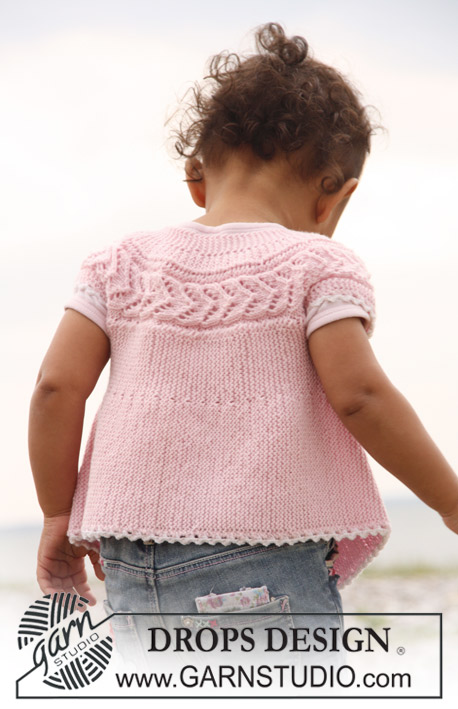 |
|||||||||||||||||||||
Short sleeve cardigan knitted from side to side in garter st and lace pattern for baby and children in DROPS BabyMerino
DROPS Baby 20-14 |
||||||||||||||||||||||
|
SLEEVELESS TOP: PATTERN: See diagram M.1. Diagram shows the pattern from RS. KNITTING TIP: When turning mid piece, slip first st as if to K, tighten thread and work return row in order to avoid a hole in transition. -------------------------------------------------------- -------------------------------------------------------- SLEEVELESS TOP: Beg on left front piece and work towards the armhole, work wide shoulder, work back piece, the other shoulder and then right front piece. LOOSELY cast on 62-68-78 (88-96) sts on needle size 2.5 mm with light pink and K 8 rows for front band (first row = RS). Work next row as follows from RS: K 41-45-52 (60-65) sts, K the next 15 sts AT THE SAME TIME inc 8 sts evenly (inc 1 st by making 1 YO), K the last 6-8-11 (13-16) sts = 70-76-86 (96-104) sts. K 1 row on all sts (work YO into back of loop to avoid a hole). Continue as follows: K 41-45-52 (60-65) sts (K these sts on all rows), chart M.1 (= 23 sts), K 6-8-11 (13-16) sts (K these sts on all rows). AT THE SAME TIME work shortened rows as follows - SEE KNITTING TIP: * work the first 30-32-38 (42-47) sts, turn piece and work return row, work the first 46-50-57 (65-70) sts, turn (for all sizes this will be after 5 sts in M.1) and work return row, work the first 64-70-80 (90-98) sts, turn and work return row, work all 70-76-86 (96-104) sts, turn and work return row *, repeat from *-* until piece measures approx 16-18-19 (20,5-22) cm from cast on row, measured where widest (= bottom edge). Cut the thread. Now slip the first 41-45-52 (60-65) sts towards bottom edge on a stitch holder (= the side) = 29-31-34 (36-39) sts left on needle for wide shoulder. Continue with shortened rows as follows (first row = from RS): * Work in pattern on the first 23-25-28 (30-33) sts, turn and work return row, work in pattern on all 29-31-34 (36-39) sts, turn and work return row *, repeat from *-* until piece measures 16-17-18 (18-20) cm from where sts were put on stitch holder. Cut the thread. Slip the 41-45-52 (60-65) sts from stitch holder at the side back on needle for back piece and insert a marker in piece. Continue from bottom edge of jacket (first row = RS) in pattern and with shortened rows as described for front piece. When piece measures 28-31-35 (37-40) cm from marker at the side, measured where widest (= bottom edge) cut the thread. Slip the first 41-45-52 (60-65) sts from bottom edge on a stitch holder (= the side). Continue on remaining sts for wide shoulder as described for the first shoulder until shoulders are the same length. Cut the thread. Slip the 41-45-52 (60-65) sts from stitch holder at the side back on needle and continue as described for the other front piece. When right front piece is the same length as left front piece (without front band) work next row from RS as follows: work 41-45-52 (60-65) sts, work the next 23 sts AT THE SAME TIME dec 8 sts evenly (dec by K2 tog), work the last 6-8-11 (13-16) sts = 62-68-78 (88-96) sts. Now work front band as follows: K 3 rows on all sts. On next row from RS make 3 buttonholes as follows (i.e. from bottom edge towards the top): K 41-45-53 (61-65) sts, 1 YO, K2 tog, K 7-8-9 (10-12) sts, 1 YO, K2 tog, K 7-8-9 (10-12) sts, 1 YO, K2 tog and finish with K1. Turn and K all sts. K 5 rows on all sts and cast off loosely. CROCHET BORDER: Crochet a border round bottom edge of jacket and round shoulder edges with crochet hook size 3 mm with white as follows: 1 dc, * 3 ch, 1 tr in the first of the 3 ch, skip approx 1 cm, 1 dc *, repeat from *-*. Cut and fasten thread. ASSEMBLY: Sew on buttons. |
||||||||||||||||||||||
Diagram explanations |
||||||||||||||||||||||
|
||||||||||||||||||||||
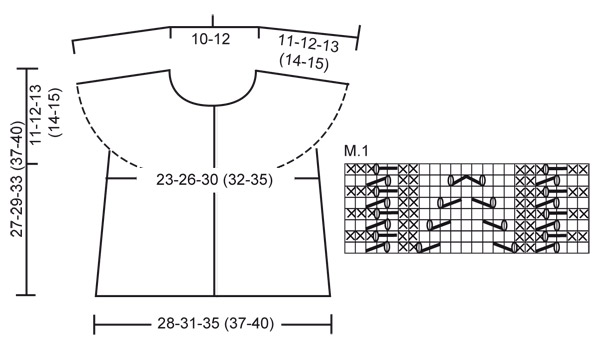 |
||||||||||||||||||||||
Have you finished this pattern?Tag your pictures with #dropspattern #novajacket or submit them to the #dropsfan gallery. Do you need help with this pattern?You'll find 16 tutorial videos, a Comments/Questions area and more by visiting the pattern on garnstudio.com. © 1982-2025 DROPS Design A/S. We reserve all rights. This document, including all its sub-sections, has copyrights. Read more about what you can do with our patterns at the bottom of each pattern on our site. |
||||||||||||||||||||||







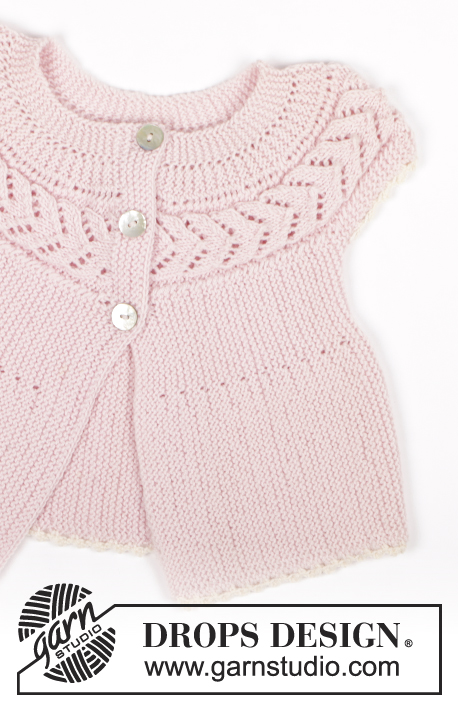

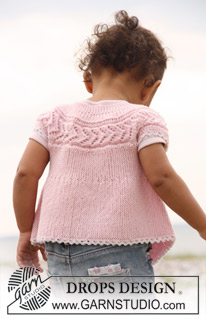
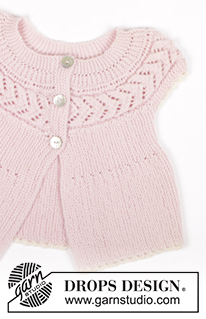




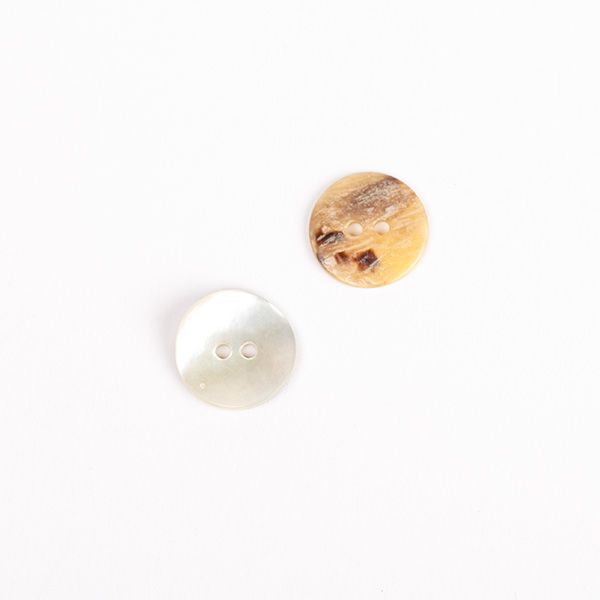

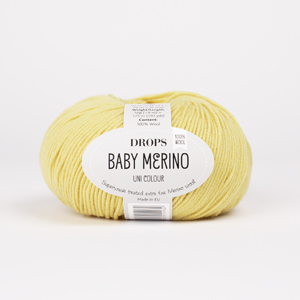
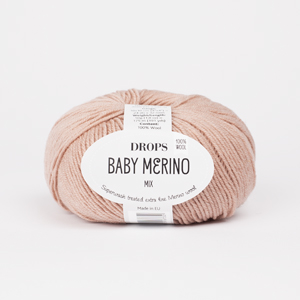








































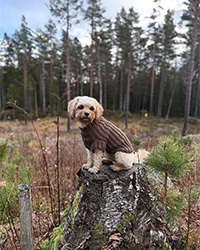
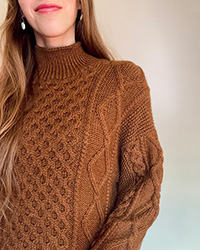
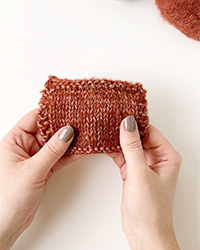
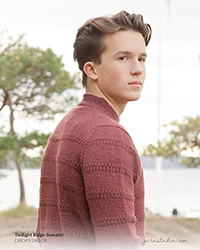
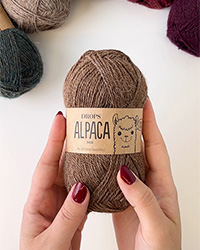
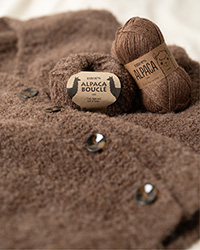
Post a comment to pattern DROPS Baby 20-14
We would love to hear what you have to say about this pattern!
If you want to leave a question, please make sure you select the correct category in the form below, to speed up the answering process. Required fields are marked *.